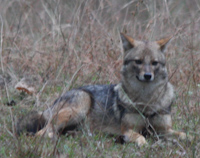It covers an area of 524 km². Satpura National Park, and along with the adjoining Bori and Panchmarhi Sanctuaries, provides 1427 km² of unique Central Indian Highland ecosystem. It was set up in 1981.
The terrain of the national park is extremely rugged and consists of sandstone peaks, narrow gorges, ravines and dense forests. The altitude ranges from 300 m to 1352 m. It has Dhoopgarh peak as high as 4500 feet (1400 m) and the almost level plains of Churna.
The nearest town to the national park is Pachmarhi and the nearest railhead is Piparia at a distance of 55 km. The state capital Bhopal is situated at a distance of 210 km.
Satpura National Park, being part of a unique ecosystem, is very rich in biodiversity. The fauna comprises tiger, leopard, sambar, chital, Bhedki, nilgai, four-horned antelope, chinkara, bison (gour), wild boar, wild dog, bear, black buck, fox, porcupine, flying squirrel, mouse deer, Indian Giant squirrel etc. There are a variety of birds. Hornbills and peafowl are the common birds.
The flora of the national park consists of mainly sal, teak, tendu, onala, mahua, bel, bamboo, and a variety of grasses and medicinal plants.






































































































































































































